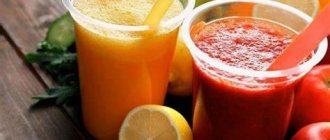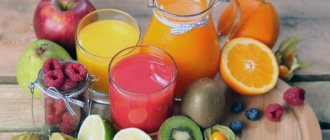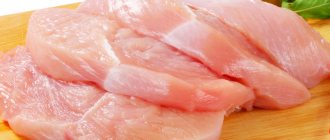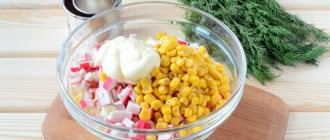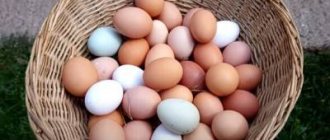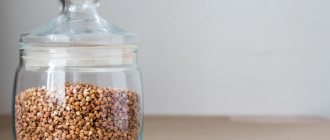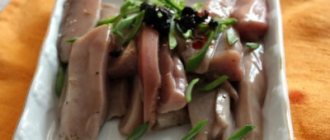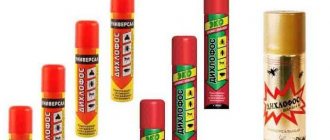Getting fresh carrot juice is easy. It is enough to have a juicer or blender with a special function on hand, as well as several kilograms of carrots.
The drink is useful for its vitamin and mineral composition, but only if stored correctly. Depending on the ambient temperature, its shelf life will differ.
Read the article about how long freshly squeezed carrot juice can be stored.
How long does it stay fresh after juicing?
Fresh carrots spoil very quickly . If you leave it in the fresh air, then within 30 minutes it will become unusable. Therefore, small portions should be drunk immediately after preparation.
You can extend the shelf life of the drink if you put it in the refrigerator. With the right approach, it will last up to 48 hours.
Carrot juice can be frozen. At the same time, it will lose about 10% of its nutritional properties, but will still remain healthy. It can be stored in the freezer for up to 6 months.
Benefits for men
Every man has faced the problem of impotence at least once in his life. Single erectile dysfunction is considered normal, since no one is immune from age-related changes, stress and general ailments. However, if such disorders become a companion of a young person, it is important to take immediate action. A rational, balanced diet plays a significant role in alternative treatment of impotence. One of the aphrodisiac products that restore erectile function is fresh carrot juice.
Benefits for men:
- increases sperm motility;
- stimulates sexual desire;
- improves sperm quality;
- enhances erectile function;
- increases the synthesis of male sex hormones (in particular testosterone);
- reduces the risk of cancer in prostate tissue.
Along with this, carrot juice has antioxidant, antiviral and tonic effects on the male body [8].
Storage rules
You can store carrot juice in the refrigerator, freezer or at room temperature. Each method has its own characteristics, as well as advantages and disadvantages that need to be taken into account.
In a refrigerator
Fresh juice can last up to 2 days in the refrigerator. To prevent it from deteriorating ahead of time, proceed as follows:
Peel the carrots, wash them and pass them through a juicer.- Strain the drink through 3 layers of gauze to remove excess pulp.
- Wash the glass jar. To kill bacteria, you can use baking soda. Additionally, scald the jar with boiling water.
- Pour the juice into a clean container.
- Close the jar with a nylon lid and put it in the refrigerator.
Do not leave the container open. In direct contact with oxygen, the drink will quickly deteriorate.
You can extend the shelf life of juice by 1-2 days using preservatives - citric acid and sugar . However, such a drink cannot be considered 100% natural.
The acid can be replaced with lemon juice, which will additionally enrich the product with vitamin C.
This storage method is good because it allows you to slightly extend the shelf life of the drink if you have received too much of it. However, it will not last long in the refrigerator.
Can it be frozen?
If the juice is to be frozen, for its preparation you need to choose those vegetables that have reached the peak of ripeness. They start pouring it without delay.
Step-by-step algorithm of actions:
- Peel and rinse the carrots and pass them through a juicer.
- If the final product contains a lot of pulp, it must be removed by straining the drink through a sieve.
- Pour the juice into plastic bottles. Once filled, squeeze them slightly to release the air. Close the container with a lid.
- Place the juice in the freezer. If it works at full capacity, it will freeze within 3 hours.
The drink is frozen in its pure form; there is no need to add preservatives or other chemicals to it.
It is better to defrost the juice gradually. The bottle is taken out of the freezer and placed in the refrigerator. It will completely thaw in 12 hours. If you need to speed up this process, then leave the container in the fresh air.
The main advantage of freezing is extending the shelf life of the product to 6 months . In the freezer, it loses no more than 10% of vitamins and minerals.
However, it will not be possible to prepare large volumes in this way, since the bottles take up a lot of useful space in the chamber.
You can pour the drink into a glass container, but there should be some free space in it, since after freezing the molecules tend to expand.
At room temperature
At room temperature, the drink does not last long, maximum 30-40 minutes . Therefore, you need to prepare it with the expectation that the entire volume will be drunk at one time.
Without a refrigerator, only sterilized juice can be stored, but with this processing method, some of the beneficial substances will be lost.
It is not recommended to consume more than 3 glasses of freshly pressed juice per day. This dose should be reduced if a person has problems with the digestive system.
Exposing the drink to direct sunlight makes the situation worse. Its main value is that it contains vitamin A and carotene. Under the influence of ultraviolet radiation they are quickly destroyed. Therefore, the juice should stand in the dark.
Oxygen is destructive to vitamin C, which oxidizes upon contact with it . If you plan to drink the drink not immediately, then cover the container with a lid.
The main advantage of aging juice at room temperature is the preservation of all nutritional properties, and the main disadvantage is the short shelf life.
Stocking up for the winter
In winter there is always a shortage of vitamins, and canned juice is just what you need to replenish the necessary substances and strengthen the immune system.
Read also: How to make fish casserole in the oven
How to make apple juice at home for the winter? To do this, it must be preserved. Properly preserved juice will last all winter.
Winter juice is different from freshly squeezed juice. Preservation involves heating. In this case, some of the vitamins and microelements are destroyed, but the taste of the drink becomes softer.
Juice cooker - housewife's assistant
There are two ways to preserve apple juice: prepare it in a juicer or in a juicer. The second method is simpler.
A juicer has many advantages:
- The taste of juice brewed in a juicer is different from that from a juicer. Cooked in a juicer - softer.
- Juice is prepared in a juicer for the winter very quickly. You just need to cut the apples and place them in the juicer.
- There is no need to finely chop the apples, remove the seeds or peel them.
- The apples are steamed, so all microbes are killed and the juice is sterile.
The process will also not cause difficulties:
- Place the apples in a juicer and sprinkle with sugar (this is a preservative).
- Place a jar under the tube. When the juice is visible in the glass part, remove the clamp.
- Immediately cover the jar with a tin lid (place it directly on the tube) and wait until it is filled to the top.
- Roll up the full jar and turn it over for air cooling.
- Send it for storage to the balcony, pantry or closet.
There are several secrets of cooking in a juicer:
- Do not use rotten fruit. Even trimmed specimens can spoil the taste of the final product.
- If the apples are too sour, you can add sugar at the beginning of cooking. And if you roll up the juice, then sugar must be added, otherwise it will ferment.
- You can add other fruits, berries, vegetables (pumpkin) to apples directly into the juicer, this will diversify both color and taste. When using colored berries (elderberry, currant), you need to add a little citric acid, then the color will be bright, beautiful, and rich.
You can use the puree obtained in the juicer pan. It is rubbed with a spoon through the holes of the same pan and placed in a clean container, sugar is added to it to taste. Then the mass is heated well, placed in sterile jars and sealed. It tastes like baby puree.
The process is labor-intensive, but the product turns out very tasty and stores well.
How to extend the shelf life?
To extend the shelf life of carrot juice, you can resort to 3 main methods:
- Cool it to +1...+2 degrees. Under such conditions, fermentation processes slow down. Be sure to protect the drink from oxygen and direct sunlight.
- Freeze it.
- Resort to conservation. In this case, the drink can be stored at room temperature or in the cellar.
To preserve freshly squeezed carrot juice, you will need the following ingredients :
- 1 kg carrots;
- 100 g sugar;
- 2 g citric acid;
- 0.2 liters of water.
Instructions:
- Peel the carrots, rinse them from dirt and sand;
- pass the products through a juicer;
- pour the drink into a clean container and let it sit for 15 minutes;
- strain through cheesecloth, dilute with warm boiled water;
- bring the juice to a boil, reduce heat and simmer for 10 minutes;
- add sugar and citric acid;
- pour into clean glass jars, cover with metal lids;
- sterilize for 20 minutes, roll up the jars.
The sterilized product can be stored in a cool, dark place for up to six months. For additional protection from ultraviolet radiation, you can use foil.
It is used to wrap the jar in 2 layers. The appearance of sediment is not a sign of spoilage. Before use, shake the jar several times.
To keep the juice fresh for several hours, and there is no way to put it in the refrigerator, the drink must be poured into a plastic bottle and placed in cold water.
This video will show you how to prepare carrot juice for the winter:
Apple juice for the winter at home using a juicer
How to seal apple juice from a juicer in jars for the winter? As easy as pie! Not only selected fruits that grow on trees are suitable for this. Indeed, for one reason or another, there is always a whole heap of fruit underneath them (the so-called carrion). Which usually have damage caused by a fall. In addition, they are most often infected with worms. Therefore, they are not suitable for fresh storage.
Where should we put them? I suggest making juice. This recipe is for you if you have a juicer in your kitchen. Stock up on a natural homemade drink, without harmful preservatives and chemicals!
Step-by-step cooking process:
Step 1. So, we prepare the main raw materials. Apples, as I already said, can be taken already fallen. The main thing is that they are not completely rotten. But, if you want, you can remove them from the tree - then there will be less hassle with them.
We wash them thoroughly. If the stains are dried and persistent, it is better to soak the fruit first and then wash it with a clean kitchen sponge.
Step 2. Cut each fruit into 4 parts, cutting off the seed capsule from each quarter. We also remove all damaged fragments.
As you may have noticed, the slices darken after being cut for a long time. This is due to their high iron content.
But this is not necessary. After all, this darkening will not affect the taste in any way.
Step 3. We pass our fruits through the juicer. Pour the resulting liquid into a saucepan or metal bowl for cooking.
When squeezing, a lot of foam is formed. This way the processed pulp is collected. We will clean it up. But you don't have to throw it away. You can make jam from it by adding a little sugar.
It's okay if a little pulp remains here. During cooking, everything unnecessary will float to the surface and we will remove it.
Step 4. If you used sour fruits, now you will need to add granulated sugar. Quantity - to taste. If the apples were sweet, then you don’t need to sweeten them at all.
Step 5. Place the resulting liquid on the stove. Over low heat, bring it to a temperature of 95 degrees Celsius.
If you do not have a kitchen thermometer, then when the first small bubbles appear around the edges of the pan, immediately turn off the stove.
Step 6. Sterilize jars or glass bottles in any convenient way. Lids too. Pour the hot product into prepared containers.
Screw the lids on tightly. Turn it upside down on a lined towel or newspaper to check if the juice is leaking. If everything is fine, cover them with a blanket in this form and let them cool completely. Thus, the workpiece will undergo additional sterilization.
Source -
If the liquid still leaks, you need to change the lid and reroll the container. And when you notice a leak after some time, it is better to bring the contents of the dishes to a hot state again.
The finished drink, as a rule, turns out to be highly concentrated. Therefore, then you can finish it with warm or cool boiled water. Also, during storage, a small sediment may appear at the bottom of the jars. This is fine.
Drink to your health!
Helpful information
To ensure that carrot juice is stored as long as possible and does not spoil, you need to take into account the following information:
To get the maximum benefit from the drink, you need to use fresh vegetables. The best time to make juice is September and October, since the harvest is carried out in the fall.- The drink will not ferment in the refrigerator if you squeeze it from healthy root vegetables. Rotten and diseased carrots are not suitable for this purpose.
- You need to freeze juice in such volumes as can be consumed at one time. You cannot put it in the freezer a second time.
- The best fresh juice comes from bright orange fruits. It indicates a large amount of carotene.
- Carrot juice goes well with other freshly squeezed drinks. It can be beetroot, pumpkin, orange, apple and even cucumber juice.
- If the concentration of the drink is too high, it can be diluted with boiled water. In order not to destroy the vitamins, it must be cooled first.
You can get the maximum benefit from the drink if you add a small amount of fat to it. This could be a teaspoon of vegetable oil or sour cream.
You will find a lot of useful information about storing carrots in this section.
Subtleties of technology
You can prepare apple juice for the winter at home in different ways. The most convenient is through a juicer, the most troublesome is through a meat grinder, and the optimal is through a juicer, since this method allows you to easily prepare juice from apples for the winter, preserving the maximum of nutrients contained in these fruits. Let's take a closer look at each of these methods.
How to make apple juice through a meat grinder
This method, as already mentioned, is the most dreary. It is suitable only for those who do not have the opportunity to purchase kitchen equipment specially designed for making juices. The procedure for preparing apple juice using a meat grinder is as follows:
- Wash the apples, dry them, cut off unattractive areas, cut out the core.
- Cut the apple pulp into large slices that can easily fit into a meat grinder.
- Crank the fruit.
- Squeeze the applesauce in parts through gauze folded in 3 layers (it will have to be washed or changed periodically).
Next, the juice must be prepared according to the instructions accompanying the selected recipe. However, when using the above method (through a meat grinder), it is difficult to maintain perfect sterility; for this reason, recipes for making juice without sugar and boiling will not suit you. This means that a drink made from apples minced through a meat grinder will not be as healthy as it could be.
How to make apple juice in a juicer
This device was created specifically for obtaining juice from fruits and berries, and most often it is used precisely to make apple juice at home for the winter. The juice cooker can be roughly divided into 3 parts: a pan for water, a juice receiver and a hopper for raw materials (in our case, these are apples). We will use a juicer to prepare apple juice for the winter like this:
- Prepare the apples by washing them, drying them and cutting them into pieces. For the best effect, it would be better to peel the apple slices. It is advisable to chop the fruit into small pieces so that they steam as quickly as possible.
- Fill the hopper with the prepared apples.
- Pour water into the pan to the appropriate mark. If there is no mark, look at the instructions. Usually 2 liters are required, but it doesn’t hurt to check. Let’s heat the water before doing this, so that later we don’t have to languish for a long time waiting for it to boil.
- Let's check whether the tap of the juice receiver is closed (we don't want our drink to immediately pour out onto the stove). In some devices, instead of a tap with a tap, there is a rubber tube with a clamp - in this case, make sure that the tube is clamped.
- Place the juicer on the stove and wait until the apples release their juice. This will happen faster if you sprinkle them with sugar, although this is not necessary (that is, in a juicer it is quite possible to make apple juice for the winter without sugar).
After this, the finished drink can only be sealed in sterilized jars. It doesn’t hurt to turn the jars over and wrap them so that additional preservation can take place before they cool.
Juicing technology using a juicer
To begin with, let’s make a reservation that not every juicer allows you to prepare apple juice for the winter. Most imported units allow you to obtain clear, pleasant-looking juice, but are not capable of processing large quantities of apples. The best choice would be domestic or Belarusian-made juicers - they will cope with the task perfectly.
If you set out to make apple juice using a juicer, we will describe for you the optimal procedure.
- Prepare the fruit. Don’t be too lazy to cut out the seed box, otherwise you will be tormented by cleaning the juicer grate
- Place a batch of fruit into the juicer bowl and turn on the appliance.
- Process all the apples one at a time.
As a result, you will get apple juice with pulp. If desired, you can leave it this way, but you can filter it (through cheesecloth) and even clarify it (by adding lemon juice). The juice with pulp can be stored for the winter without sugar, preserving the maximum of nutrients. Sugar is added to clarified juice to neutralize the sour taste of lemon juice. It is advisable to boil the juice without pulp - sterilization alone will not be enough.
Additionally, I would like to remind you that jars and lids for winter preparations must be sterilized before use. Apple juice is no exception in this case.
Contraindications
Despite its numerous beneficial properties, freshly squeezed juice is a controversial product. It should be used with caution and in moderation.
In addition, there are a number of contraindications:
- in diabetes due to high concentrations of sugar;
- for gastrointestinal diseases and high acidity;
- with a tendency to allergies.
In addition to general contraindications, each juice has its own recommendations, so if you decide to prescribe juice therapy yourself, do not forget to consult your doctor.
For example, fresh beetroot can be harmful to hypotensive people and people suffering from urolithiasis.
The grapefruit drink contains naringin, a substance that inhibits the action of enzymes that break down drugs in the liver, as a result of which they (that is, drugs) accumulate in the body, and this, you know, is not at all healthy.
Method of pasteurization of natural apple juice with pulp
The method includes packaging the juice into jars, treating the filled jars with a microwave field with a frequency of 2400±50 MHz for 55-60 s to a temperature of 95-96°C. Next, the filled jars are sealed and pasteurized in an autoclave. The proposed method allows to reduce the duration of the process of thermal pasteurization of canned food.
The invention relates to the canning industry, namely to methods for pasteurizing canned “Natural apple juice with pulp” in bottles and glass jars with a capacity of 0.2-0.25 liters.
The sources that were searched for this method showed that its prototype is the method, the essence of which is that jars with the product are pasteurized in an autoclave according to the
Traditional apple juice recipe
If this is your first time trying to prepare apple juice at home for the winter, then you can start with the traditional recipe. After all, it is the lightest and does not require any additives.
Sugar is added there to taste only if the juice is too sour for you. Once you have mastered this basics, you can then move on to more advanced recipes.
Components:
- Apples - as many as you have;
- Sugar - optional.
First of all, do not forget that the jars where your juice will be stored must be sterilized.
When sorting and washing the apples, be sure to cut off all rotten areas and cut out the core.
Usually, to obtain juice, a juicer or a meat grinder is used. Or they grate it and then squeeze out the pulp through gauze.
Since today we are talking about making juice using a juicer, use one for these specific recipes. And then, the option with this device is the easiest and most convenient. And it requires much less power compared to other methods.
Filter the drink prepared in a juicer and pour it into a large saucepan or deep bowl.
It is important that the cookware is not aluminum
Place the pan on gas and bring to a boil as quickly as possible. But here you need to have time to catch the moment when the juice begins to bubble. When you notice small bubbles, remove the foam that appears and turn off the gas.
Filter the drink through a gauze cloth. Taste the juice and add granulated sugar if necessary. Add sweetness to taste, but try not to exceed the amount of a hundred grams per liter of liquid.
Heat the juice again to about eighty degrees. Pour it hot into jars, seal and let cool. You can leave them indoors for the first couple of weeks, and then be sure to move them into the dark and cool.
In the traditional recipe, it is not necessary to heat the juice again. This is needed more in order to get rid of sediment in advance, which may form later. But this sediment in no way affects the taste of the drink or the duration of its storage.
At the same time, the use of this pasteurization option in the process of making apple juice for the winter is excellent if the jars have to be stored in a heated room.
Composition and calorie content of carrots
Calories 41 Kcal
- Fat:
0.2 g - Proteins:
1.2 g - Carbohydrates:
9.6 g - Water:
88 g - Ash:
1 g - Fiber:
3 g
| Vitamins (per 100 g): | Quantity | %RDN |
| Beta carotene | 5650-16300 mcg | 224% |
| Vitamin A (retinol) | 835 mcg | 104% |
| Vitamin B9 (folic acid) | 19-47 mcg | 13,8% |
| Vitamin K | 10-20.2 mcg | 11% |
| Minerals (per 100 g): | Quantity | %RDN |
| Bor | 200 mcg | 286% |
| Vanadium | 99 mcg | 248% |
| Silicon | 25 mg | 83% |
| * Mercury | 0.6 mcg | 60% |
| Molybdenum | 20 mcg | 28,6% |
| Rubidium | 23.5 mcg | 23,5% |
| Manganese | 140-690 mcg | 21,5% |
| Cobalt | 2 mcg | 20% |
| Potassium | 225-380 mg | 13% |
Full chemical composition ➤
Other important connections:
- Purines
— 6 mg (5% of RDA)
- Oxalic acid
— 44 mg (11% of the RDA)
Carrots contain large quantities of the toxic ultramicroelement mercury (in 100 g - 60% of the daily requirement!), and are capable of accumulating arsenic and strontium.
Pasteurization
Squeeze the fruit cut into slices in a juicer, pour the resulting liquid into an enamel or glass container. To prevent oxidation and further darkening, it is advisable to add a little lemon juice. We will need a large saucepan. After squeezing, pour the future drink from the container, without heating, into jars and cover with lids. Place them in a saucepan and fill with warm water up to the neck. We heat the water to a temperature of 85 degrees, reduce the heat and, maintaining the temperature, pasteurize the jars. The time depends on their size: 20 minutes for one and a half liters and 30 minutes for two to three liters. Using a towel folded several times or a thick pot holder, we carefully take out the hot jars one by one and immediately roll them up. Another way to roll up apple juice has been mastered.
